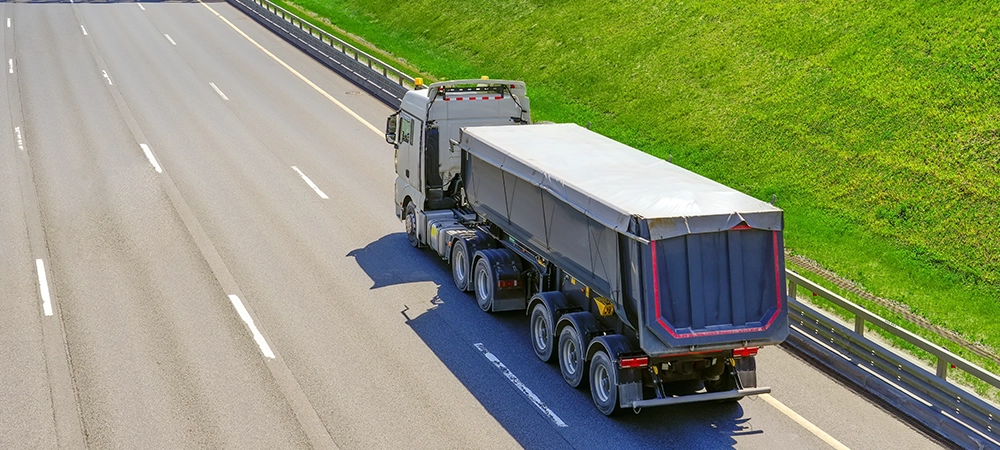Relocating from the Prairies to Central Canada covers almost 2,700 km of open road, winding shield country, and busy 401 traffic. With that kind of distance, a “hope-for-the-best” approach invites cost overruns and paperwork headaches.
The good news? A clear, timed checklist turns a huge project into a series of quick wins you can tick off one by one. Use this guide to arrive on schedule, on budget, and ready to plug into your new life.
Why Early Planning Saves Cash and Stress
Secure the key pieces of your move well in advance and you’ll lock in better freight rates, reserve the equipment you need, and sidestep any schedule gaps.
- Rates climb fast. Long-haul freight is priced by distance and demand; booking eight weeks out locks in lower fuel surcharges.
- Paperwork runs on deadlines. Ontario gives newcomers strict windows for health cards, driver’s licence, and plates. Miss one and you could face fines or coverage gaps.
- Carrier space fills up. Summer is the peak season along the Trans-Canada Highway. Early reservations secure the truck size you need and ideal pickup dates.
Related Article: The Cost of Moving from Saskatchewan to Ontario
The Saskatchewan-to-Ontario Moving Checklist
Moving two provinces east can feel overwhelming, but breaking it into clear, timed tasks keeps costs and stress low. The steps below walk you from early carrier quotes to swapping your licence. Follow each step and roll into Ontario right on schedule.
1. Pick Your Move Week and Set a Realistic Budget
Count back at least eight weeks from your ideal arrival date. Collect quotes for the 2,692 km Regina-to-Toronto haul — roughly three long driving days for a solo driver or a two-day run for a professional team.
2. Inventory Everything and Trim the Load
Walk room by room and label each item Keep | Donate | Sell | Recycle. Photograph valuables for insurance records, then list large items on local buy-and-sell sites. Cash from unwanted furniture offsets freight costs and cuts the weight your movers must handle.
3. Choose and Vet Your Carrier
Call at least three companies and ask for:
- Proof of Commercial Vehicle Operator’s Registration and cargo insurance limits.
- A written service level agreement detailing pickup windows, layover charges, and delivery ETA.
- Real-time GPS tracking so you always know where your load sits. RoadLINX, with more than 20 years in cross-border freight, supplies a customer portal that refreshes location and temperature data every few minutes.
4. Match Shipping Mode to Your Situation
- Full Truckload (FTL): Ideal when your household fills most of a 53-foot trailer. Direct loading means no mid-route transfers and the shortest transit time.
- Less-Than-Truckload (LTL): Pay only for the trailer space you use — perfect for studio apartments or partial moves. RoadLINX consolidates compatible freight to keep rates competitive.
- Flatbed: Best for oversized tools, small tractors, or motorcycles that need side loading.
- Refrigerated or Heated Van: Required for wine, art, and anything that can’t freeze or overheat during the Lake Superior stretch.
5. Buy Enough Cargo Insurance and Activate Tracking
Basic liability covers about CAD 2 per pound. If you own high-value electronics or heirlooms, buy a rider that covers replacement cost. Make sure your carrier’s tracking system updates at least once an hour. RoadLINX lets you share a live link with relatives or landlords waiting on delivery.
Related Article: Moving from Ontario to Alberta: Everything You Need to Know
6. Plan the Route and Fuel Stops
Most carriers stick to Trans-Canada Hwy 1 through Manitoba, pick up Hwy 17 around Lake Superior, then roll onto Hwy 401 into the Greater Toronto Area. Northern Ontario has long stretches without services, so plan fuel and food stops no more than 350 km apart. In winter, build in a buffer day for weather-related closures north of the lake.
7. Tackle Residency Paperwork as Soon as You Arrive
- Ontario Health Insurance Plan (OHIP): Ontario still waives the old three-month waiting period, so apply for a health card on Day 1.
- Driver’s licence: Exchange your Saskatchewan licence within 60 days. Book an appointment at ServiceOntario and bring two proofs of your new address.
- Vehicle plates and permit: You have 30 days to register your vehicle in Ontario. You’ll need local insurance and a safety inspection certificate.
8. Switch Essential Services and Utilities
Submit a 12-month mail-forwarding order with Canada Post (the year-long plan is the cheapest per week). Schedule shut-offs for power, gas, water, and internet 24 hours after your pickup to cover last-minute delays. Update addresses with CRA, banks, and loyalty programs so tax slips and statements land in the right mailbox.
9. Pack Room by Room on a Four-Week Countdown
- Four weeks out: Box seasonal gear, seldom-used kitchenware, and décor.
- Two weeks out: Pack guest linens, most toys, and duplicate electronics.
- Final week: Pack daily dishes, toiletries, laptops, and work files—everything except a single suitcase of clothing and an “Open First” box with a kettle, linens, and chargers.
- Colour-code boxes by destination room so your unload crew can drop each carton in the right spot.
10. Load-Day Must-Do List
- Keep passports, licences, meds, and lease papers in a backpack you’ll carry yourself.
- Verify the driver’s Bill of Lading matches your written inventory.
- Photograph gas, electric, and water meters before locking the door to prevent billing disputes.
11. Arrival and Unload Routine
- Walk the empty trailer with the driver and flag any damage before signing.
- Plug in fridges and freezers immediately; they need four hours to reach safe temperatures before loading food.
- Flatten empty boxes as you go. This frees up space and speeds the final cleanup.
12. Finish Ontario Setup Within the First 60 Days
- Swap plates, finalize insurance, and file change-of-address forms.
- Register children in school as soon as you have proof of residence; some districts fill specialty programs quickly.
- Add your name to the local medical clinic roster; popular family doctors run waitlists of several months.
Related Article: How Much Does Shipping from Ontario to Alberta Cost
How RoadLINX Keeps Long-Haul Moves on Track
Founded in 2001, RoadLINX has grown from a single truck to a modern fleet of dry vans, reefers, and flatbeds serving Canada and the United States. Their Saskatchewan-to-Ontario clients gain:
- Flexible equipment: Standard dry vans for furniture and boxes, climate-controlled units for temperature-sensitive cargo, and flatbeds for oversized items.
- Real-time visibility: Satellite-linked electronic logging devices feed live data into a customer portal, so you check location, speed, and temperature from your phone.
- Integrated warehousing: Short-term storage at GTA facilities lets you stagger deliveries if your new home isn’t move-in ready.
- Single point of contact: A dedicated account manager schedules pickup, tracks the load, and arranges final delivery. No hidden hand-offs to third-party brokers.
With predictable pricing and end-to-end oversight, RoadLINX streamlines a move that might otherwise involve multiple subcontractors, each with their own schedule and fee structure.
Ontario: Your Move, Simplified
A long-haul relocation only looks overwhelming until you break it into timed steps: lock in movers, purge excess weight, protect valuables, and complete provincial paperwork on schedule.
Build your eight-week timeline, secure insurance and tracking, and keep the must-carry documents on your person. Finish with Ontario’s 30- and 60-day tasks, and you’ll shift from prairie living to GTA life without missing a beat.
Ready to tick the biggest box on your list? Request a RoadLINX estimate today and roll into Ontario knowing every kilometer is covered.





